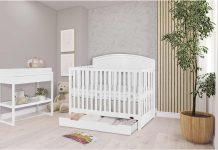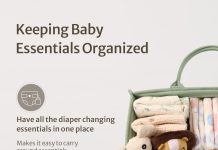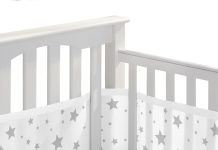Mini cribs and full-size cribs are both popular choices for parents when it comes to providing a cozy and safe sleeping environment for their little ones. However, each option comes with its own set of advantages and disadvantages. In this article, we will explore the pros and cons of mini cribs compared to full-size cribs, helping you make an informed decision that suits your needs and preferences. Whether it’s space limitations or portability that you prioritize, we have got you covered. So, let’s dive in!
Review contents
Space
Mini cribs are space-saving
One of the biggest advantages of mini cribs is their space-saving design. They are the perfect solution for families who have limited space in their homes. Mini cribs are much smaller than full-size cribs, making them a great option for small apartments, nurseries, or even shared bedrooms. With a mini crib, you can provide a comfortable and secure sleeping space for your baby without sacrificing valuable floor space in the room.
Full-size cribs take up more space
On the other hand, full-size cribs require a significant amount of space. They are larger in size and are designed to accommodate growing babies. While full-size cribs provide ample space for the baby to move around and play, they may not be suitable for rooms with limited space. Families living in smaller homes may find it challenging to fit a full-size crib into their nursery or bedroom, leaving them with less space for other essential furniture or activities.
Portability
Mini cribs are portable
Portability is an important factor to consider when choosing a crib, especially for families who frequently travel or need to move the crib from room to room. Mini cribs are much lighter in weight and easier to maneuver compared to full-size cribs. They are designed with mobility in mind, often featuring wheels or casters that allow you to effortlessly transport the crib from one place to another. This makes mini cribs an excellent choice for families who need a crib that can be easily moved around the house or taken on trips.
Full-size cribs are less portable
In contrast, full-size cribs are generally heavier and bulkier, making them less portable. While some full-size cribs may come with wheels or casters, maneuvering them can still be more challenging due to their size and weight. This lack of portability can be an inconvenience for parents who often need to change the crib’s location or travel with it. If portability is a priority for you, a mini crib may be the more suitable option.
Affordability
Mini cribs are often cheaper
When it comes to affordability, mini cribs have a clear advantage. They are generally more budget-friendly compared to full-size cribs. The smaller size of mini cribs translates into lower manufacturing costs, which is often reflected in their price tags. For families on a tight budget or those who want to save some money, opting for a mini crib can be a wise choice. You can still provide a comfortable and safe sleeping space for your baby without breaking the bank.
Full-size cribs can be more expensive
In contrast, full-size cribs tend to be pricier than their mini counterparts. Their larger size and more elaborate designs often come with a higher price tag. Additionally, full-size cribs may offer additional features or higher-quality materials, further contributing to their higher cost. While full-size cribs can be a more significant investment, they may also offer more long-term value due to their longevity and versatility, which we will discuss in the following sections.
Versatility
Mini cribs can be converted into twin beds
One of the impressive features of mini cribs is their ability to convert into twin beds. Although mini cribs are specifically designed for infants, many models come with conversion kits that allow you to transform the crib into a twin bed as your child grows. This versatility makes mini cribs an excellent long-term investment, as they can adapt to your child’s changing needs and save you the cost of purchasing a separate bed. It is worth noting that not all mini cribs offer conversion options, so be sure to check the specifications before making a purchase.
Full-size cribs cannot be converted
Unlike mini cribs, full-size cribs usually cannot be converted into other bed sizes. They are designed to provide a safe and comfortable sleeping space for infants and are not intended for long-term use. Once your child outgrows the full-size crib, you will need to purchase a separate bed, which can be an additional expense. However, if you are planning to have multiple children or you have a need for a full-size crib in the future, this may not be a significant drawback for you.
Longevity
Full-size cribs can be used for longer
When it comes to longevity, full-size cribs have the upper hand. These cribs are larger and built to accommodate growing toddlers, usually up to the age of 2-3 years old. The larger sleeping surface and sturdy construction of full-size cribs make them suitable for extended use. This means that if you invest in a full-size crib, you can use it for a longer period before transitioning your child to a regular bed. This can be particularly beneficial for families who want to get the most out of their crib purchase and plan to have multiple children.
Mini cribs are outgrown more quickly
On the other hand, mini cribs are designed for infants and are quickly outgrown as the baby grows. Most mini cribs have weight or height limits that may restrict their use to the first year or so of a baby’s life. As your child reaches these limits, you will need to transition them into a larger bed. While this can be seen as a disadvantage in terms of longevity, mini cribs can still be a practical choice if you have limited space or if you already have plans for a separate bed for your child once they outgrow the crib.
Comfort
Full-size cribs offer more space for the baby
One of the considerations when choosing a crib is the comfort it provides for the baby. Full-size cribs offer a more spacious sleeping environment compared to mini cribs. The larger dimensions of full-size cribs allow babies to have more freedom of movement while sleeping, which can contribute to their overall comfort. Additionally, full-size cribs often come with thicker and more comfortable mattresses, providing enhanced support for the baby’s growing body.
Mini cribs may feel cramped
In contrast, mini cribs, due to their smaller size, may feel more confined. Babies who are used to more space might find the limited sleeping area of a mini crib uncomfortable. However, it’s worth noting that many mini cribs still provide ample space for babies to sleep comfortably, and most infants adapt well to the cozy environment. If space is a top concern for you, a mini crib can still be a suitable option, and you can enhance the comfort by choosing a high-quality mattress.
Available Accessories
Full-size cribs have more accessories available
One practical advantage of full-size cribs is the wide range of accessories available for them. From crib mattresses, bedding sets, mobiles, and crib bumpers to storage options and additional safety features, there is an abundance of accessories designed specifically for full-size cribs. This allows parents to customize and personalize their baby’s sleeping space, ensuring that it meets all their needs and preferences.
Mini cribs have limited accessory options
In comparison, mini cribs often have fewer accessories available. Due to their smaller size and less common usage, manufacturers may produce a limited range of accessories specifically designed for mini cribs. While you can still find essential accessories such as mini crib mattresses and fitted sheets, the options may be more limited compared to full-size cribs. However, with some creativity and resourcefulness, you can still find ways to make the mini crib comfortable and visually appealing for your baby.
Ease of Assembly
Mini cribs are typically easier to assemble
Assembly can be a significant factor to consider when choosing a crib, particularly for parents who may not be experienced in furniture assembly. Mini cribs are generally easier to assemble compared to full-size cribs due to their smaller size and simpler design. They often come with straightforward instructions and fewer components, making the assembly process quicker and less complicated. This can be a considerable advantage for busy parents or those who prefer a hassle-free setup.
Full-size cribs can be more complex to assemble
In contrast, full-size cribs can be more complex to assemble. Their larger size and additional features may require more time and effort during the assembly process. Full-size cribs often come with multiple parts, certain adjustments, and additional safety measures that need to be properly installed. While the assembly process might be more involved, it is essential to follow the instructions carefully to ensure a safe and secure crib for your baby.
Safety
Full-size cribs meet stricter safety standards
Safety is of utmost importance when it comes to choosing a crib for your baby. Full-size cribs, being the standard option, are subject to stricter safety standards and regulations. Manufacturers of full-size cribs are required to meet specific safety guidelines to ensure the utmost protection for infants. These cribs undergo rigorous testing to minimize potential hazards and risks, such as entrapment and suffocation hazards. When purchasing a full-size crib, you can have peace of mind knowing that it has undergone thorough safety assessments.
Mini cribs may have fewer safety features
While mini cribs also need to meet certain safety standards, they may have fewer safety features compared to full-size cribs. Due to their smaller size and simpler designs, mini cribs may not have the same level of safety features such as adjustable mattress heights, teething rails, or reinforced frames. It is crucial to carefully inspect the mini crib and ensure that it meets all the necessary safety requirements before making a purchase. Additionally, always follow safe sleep guidelines and never use any loose bedding or pillows in the crib to ensure your baby’s safety.
Design Options
Full-size cribs offer a wider range of design options
For parents who value aesthetics and want a crib that complements the overall nursery decor, full-size cribs offer a wider range of design options. Whether you prefer modern, traditional, rustic, or eclectic styles, you can find a full-size crib to match your design preferences. From elegant sleigh-like designs to contemporary cribs with sleek lines, the possibilities are extensive. Full-size cribs also come in various finishes and colors, allowing you to create a cohesive and visually appealing nursery.
Mini cribs may have limited design choices
In contrast to full-size cribs, mini cribs may have more limited design options. Due to their smaller size and less common usage, manufacturers may produce a narrower range of design styles and finishes for mini cribs. While you might have fewer options, this doesn’t mean you can’t find a visually appealing mini crib that suits your taste. Some mini cribs still offer beautiful and stylish designs that can add charm to your baby’s space.
In conclusion, the choice between a mini crib or a full-size crib depends on various factors such as space availability, portability needs, budget constraints, and personal preferences. Mini cribs are a great space-saving option suitable for small nurseries or shared bedrooms, offering portability and affordability. They may be outgrown more quickly and have limited accessory options, but they can be converted into twin beds, adding to their versatility. On the other hand, full-size cribs provide more comfort and longevity, meeting stricter safety standards, and offering a wider range of design options. Consider your specific needs and weigh the pros and cons outlined above to make an informed decision that meets the needs of your growing family.






























